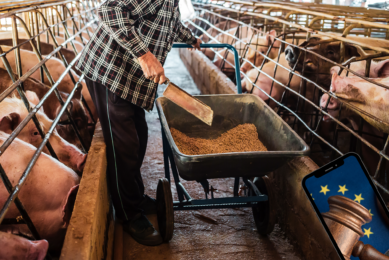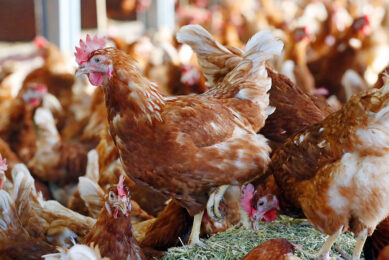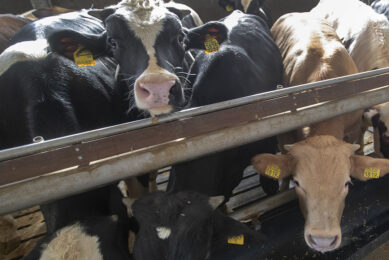Protect methionine and lysine in dairy rations
A high concentration of methionine or lysine in a dairy feed does not ensure that large amounts of it will pass to the small intestine for absorption, because the ruminal bacteria degrade amino acids to different extents.
The degradability (how much is degraded in the rumen) of protein in feeds, along with the amount of protein that is indigestible in feeds, needs to be considered when evaluating feed sources of methionine and lysine, writes Gerold Higginbotham in the February issue of the California Dairy Newsletter.
Methionine and lysine are two amino acids which have been suggested to be potentially limiting milk and milk component production by dairy cows.
If true, this means that high producing dairy cows need to be fed protein from sources which have both a good amino acid profile and have resistance to degradation by bacteria in the rumen.
Methionine and lysine contents of proteins vary greatly among feeds. Fish meal and by-products produced from cereal grains (including corn), tend to have higher concentrations of methionine and lower lysine than soybean meal and blood meal.
Soybean meal and blood meal
Soybean meal and corn gluten feed tend to supply similar amounts of methionine, and some by-product feeds supply two to five times as much available methionine as soybean meal or canola meal.
Relative to lysine, blood meal supplies the most available lysine, soybean and canola meal an intermediate amount, and cereal grain by-products the smallest amount per unit of crude protein.
Rumen protected
Several companies that supply feed additives have developed rumen protected forms of methionine and lysine.
Such technology makes it possible to augment dairy rations with methionine and lysine in order to provide a desired methionine and lysine balance in the protein that enters the small intestine and is available for absorption.
However one must be cautious in assuming responses of cows to ruminally protected forms of amino acids as data are limited (and conflicting) on the dietary conditions under which methionine and/or lysine limit performance of lactating dairy cows.
The milk price will affect the return to feeding a ruminally protected methionine and/or lysine, but producers may see a higher 0.05 to 0.10 percent units of fat test with ruminally protected methionine.
Some groups of cows may respond to ruminally protected methionine, while some may respond to ruminally protected lysine, if they are in fact limiting milk production.











